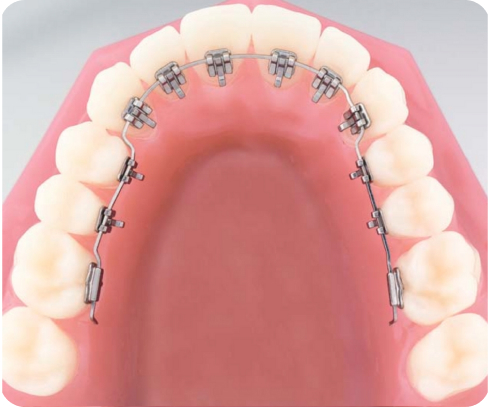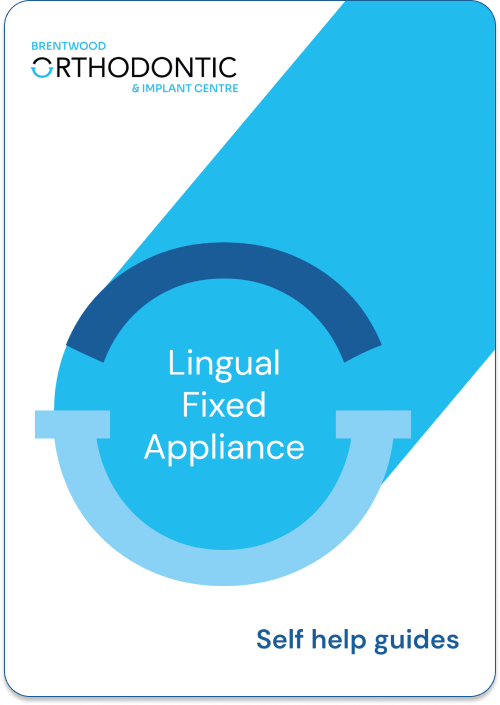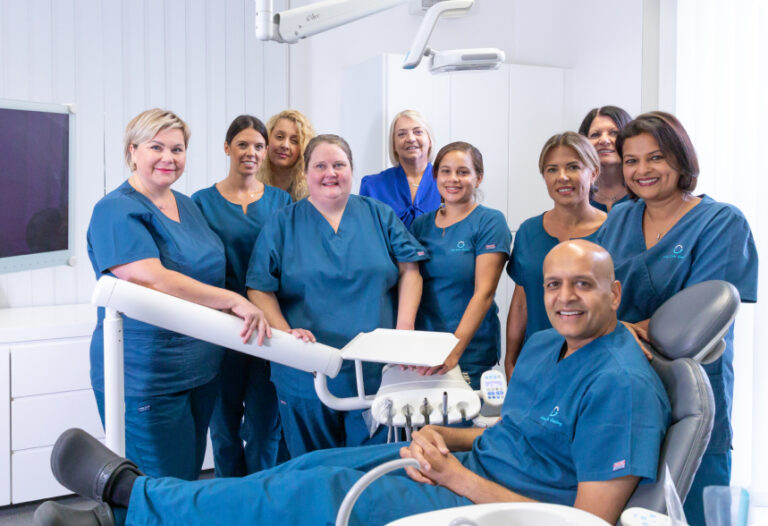Live Life Smiling
Braces that are fitted behind the teeth
Braces fitted behind the teeth are described as lingual, from lingua, the Latin word for tongue. They are hidden on the inside of the teeth, they are most often worn by adult private patients who want their teeth straightened but don’t want to be seen in braces.
As with all brace systems which are fixed to teeth, they allow for greater three dimensional control than removable treatments and can treat and improve a wider range of problems.
There are many lingual systems, including customised and non-customised options. It’s also possible to have invisible lingual braces on your upper teeth and standard braces on lower teeth.
- Incognito Full
- Incognito Lite
- Social Sixes (STB)
A small risk of orthodontic treatment is decalcification, an attack on tooth enamel producing white marks, usually the result of poor diet and poor oral hygiene. One benefit of lingual braces is that they are less likely to mark teeth than standard braces. This is supported by research which shows that the damage which can occur is likely to be less severe and less frequent on lingual surfaces.
As with all brace systems which are fixed to teeth, they allow for greater three dimensional control than removable treatments and can treat and improve a wider range of problems.
There are many lingual systems, including customised and non-customised options. It’s also possible to have invisible lingual braces on your upper teeth and standard braces on lower teeth.
- Incognito Full
- Incognito Lite
- Social Sixes (STB)

A small risk of orthodontic treatment is decalcification, an attack on tooth enamel producing white marks, usually the result of poor diet and poor oral hygiene. One benefit of lingual braces is that they are less likely to mark teeth than standard braces. This is supported by research which shows that the damage which can occur is likely to be less severe and less frequent on lingual surfaces.
Will it be painful?
It is likely to be sore for about 3-5 days each time the brace is adjusted. If necessary, simple painkillers such as the ones you would normally take for a headache should help – please read the instructions on the packet. If the brace rubs your lips or cheeks, you can use some wax to help with this. Dr N Shah and his team can give you further advice.
Can I remove the brace?
The brace you are now wearing is fixed to the teeth for the whole of your treatment. You should not try to remove it, as you may damage your teeth and the treatment will not work.
Can I eat normally?
Yes, you should be able to eat normally. However, for your orthodontic treatment to work well and in the shortest possible time, it is important that you take care of the teeth and brace. In order to prevent damage to bot, you should;
- avoid sugary snacks/drinks between meals and at bedtime,
- avoid sticky, chewy or hard sweets, mints and sugared chewing gum,
- avoid fizzy drinks (including diet drinks) and large amounts of fruit juices,
- hard or chewy foods, such as apples, carrots and crusty bread can damage your brace. Avoid them or cut them up first.

What about tooth brushing?
It is important that you brush your teeth well for at least 3 minutes, twice per day. Use a fluoride toothpaste. If possible, carry a brush with you to use after lunch. Brushing may take a little longer when you have a fixed brace so take your time. Pay particular attention to brush where the gums meet the teeth. Inter-dental brushes may help you to clean around the brace and in between the teeth. An alcohol-free fluoride mouth rinse should also be used daily. Use it at a different time of the day to when you brush your teeth. This helps maintain the fluoride protection to your teeth. Avoid eating or rinsing for 20 minutes after use. Sugary snacks/drinks and poor cleaning of your teeth and brace will lead to permanent damage to your teeth.
How long will treatment take?
Usually between 12-30 months but this will vary from patient to patient. Missed appointments and repeated breakages of your brace will add time to your overall treatment.
Will I need to wear anything in addition to the fixed braces?
It may be necessary for you to wear elastics at some stage during your treatment. Elastics are worn inside the mouth during the day and night, including mealtimes some times.
Will I need to wear another brace once my treatment has finished?
Once the active part of your treatment has finished, it will be necessary to wearing a retaining brace. This may be removed or fixed behind the front teeth. Retention is for life, to prevent the teeth from moving.
Do I still need to see my regular dentist?
Yes, it will be important you attend regular check ups.
What happens after my treatment?
After the treatment it is advised you wear retainers, a bespoke fixed retainer set permanently behind the teeth and a clear removable pair for at least 8 hours per day for the next year. The use of retainers can be reduced but long term wear is advised to maintain your new smile.

